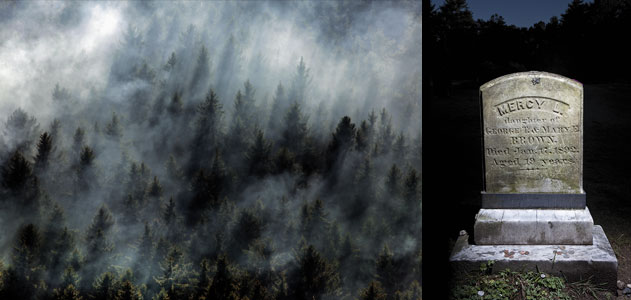The Great New England Vampire Panic
Source: smithsonianmag.com
Two hundred years after the Salem witch trials, farmers became convinced that their relatives were returning from the grave to feed on the living.
Children playing near a hillside gravel mine found the first graves. One ran home to tell his mother, who was skeptical at first—until the boy produced a skull.
Because this was Griswold, Connecticut, in 1990, police initially thought the burials might be the work of a local serial killer named Michael Ross, and they taped off the area as a crime scene. But the brown, decaying bones turned out to be more than a century old. The Connecticut state archaeologist, Nick Bellantoni, soon determined that the hillside contained a colonial-era farm cemetery. New England is full of such unmarked family plots, and the 29 burials were typical of the 1700s and early 1800s: The dead, many of them children, were laid to rest in thrifty Yankee style, in simple wood coffins, without jewelry or even much clothing, their arms resting by their sides or crossed over their chests.
Except, that is, for Burial Number 4.
Bellantoni was interested in the grave even before the excavation began. It was one of only two stone crypts in the cemetery, and it was partially visible from the mine face.
Scraping away soil with flat-edged shovels, and then brushes and bamboo picks, the archaeologist and his team worked through several feet of earth before reaching the top of the crypt. When Bellantoni lifted the first of the large, flat rocks that formed the roof, he uncovered the remains of a red-painted coffin and a pair of skeletal feet. They lay, he remembers, “in perfect anatomical position.” But when he raised the next stone, Bellantoni saw that the rest of the individual “had been completely...rearranged.” The skeleton had been beheaded; skull and thighbones rested atop the ribs and vertebrae. “It looked like a skull-and-crossbones motif, a Jolly Roger. I’d never seen anything like it,” Bellantoni recalls.
Subsequent analysis showed that the beheading, along with other injuries, including rib fractures, occurred roughly five years after death. Somebody had also smashed the coffin.
The other skeletons in the gravel hillside were packaged for reburial, but not “J.B.,” as the 50ish male skeleton from the 1830s came to be called, because of the initials spelled out in brass tacks on his coffin lid. He was shipped to the National Museum of Health and Medicine, in Washington, D.C., for further study. Meanwhile, Bellantoni started networking. He invited archaeologists and historians to tour the excavation, soliciting theories. Simple vandalism seemed unlikely, as did robbery, because of the lack of valuables at the site.
Finally, one colleague asked: “Ever heard of the Jewett City vampires?”
In 1854, in neighboring Jewett City, Connecticut, townspeople had exhumed several corpses suspected to be vampires that were rising from their graves to kill the living. A few newspaper accounts of these events survived. Had the Griswold grave been desecrated for the same reason?
In the course of his far-flung research, Bellantoni placed a serendipitous phone call to Michael Bell, a Rhode Island folklorist, who had devoted much of the previous decade to studying New England vampire exhumations. The Griswold case occurred at roughly the same time as the other incidents Bell had investigated. And the setting was right: Griswold was rural, agrarian and bordering southern Rhode Island, where multiple exhumations had occurred. Many of the other “vampires,” like J.B., had been disinterred, grotesquely tampered with and reburied.
In light of the tales Bell told of violated corpses, even the posthumous rib fractures began to make sense. J.B.’s accusers had likely rummaged around in his chest cavity, hoping to remove, and perhaps to burn, his heart.
[...]
Read the full article at: smithsonianmag.com






















